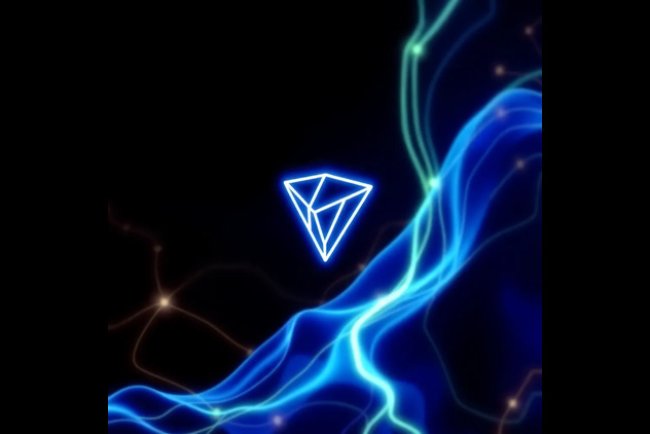Cardano unlocks Bitcoin liquidity with BitcoinOS Grail Bridge integration
Cardano unlocks Bitcoin liquidity with BitcoinOS Grail Bridge integration, enhancing its DeFi ecosystem. Learn about the potential impacts and benefits.

Cardano has made a significant advancement by integrating with the Bitcoin ecosystem through the BitcoinOS Grail Bridge. This integration, announced on October 24, 2024, allows Cardano to tap into Bitcoin's substantial liquidity, enhancing its decentralized finance (DeFi) capabilities.
Key Highlights of the Integration
-
Smart Contract Layer for Bitcoin: Charles Hoskinson, the founder of Cardano, emphasized that this integration effectively adds a smart contract layer to Bitcoin, expanding its functionality within the crypto space.
-
Access to Bitcoin's Liquidity: By utilizing BitcoinOS's infrastructure, Cardano becomes the first Layer 1 blockchain to access Bitcoin's vast liquidity pool, estimated at $1.3 trillion. This move is expected to bridge a critical gap in the Bitcoin network, facilitating DeFi activities that have largely occurred outside of Bitcoin's ecosystem.
-
Grail Bridge Technology: The Grail Bridge employs zero-knowledge cryptography, allowing Bitcoin users to securely transfer their assets. This technology enables Cardano to enhance liquidity and facilitate trustless transfers of Bitcoin (BTC) and other Bitcoin-based assets.
Statements from Key Figures
Charles Hoskinson remarked that BitcoinOS serves not merely as a bridge but as a "brain" that guides Bitcoin's integration into the broader crypto ecosystem. He stated:
“BitcoinOS is going to let Bitcoin flow into the crypto world, and they finally get to ditch their boring lives and enjoy DeFi, GameFi, and the magic of Smart Contracts.”
He also pointed out that users can now pay transaction fees directly in Bitcoin, creating mutual benefits for users across both networks. Hoskinson added:
“Whether your Bitcoin stays at home or goes to visit other chains, it doesn’t impact the Bitcoin network. With BOS, they can now go interact with other ledgers. Only with Cardano can you do it natively with UTXO and soon pay your transaction fees in Bitcoin. This means Bitcoin now has a smart contract layer.”
Final Thought
The integration of Cardano with BitcoinOS's Grail Bridge marks a pivotal moment in the evolution of both networks. By unlocking Bitcoin's liquidity and enabling smart contract functionality, this partnership aims to create a more interconnected and efficient crypto ecosystem, ultimately benefiting users and developers alike.
FAQ: Cardano's BitchinOS Grail Bridge Integration
1. What is the BitcoinOS Grail Bridge?
The BitcoinOS Grail Bridge is a technological solution that enables secure and seamless asset transfers between Cardano and Bitcoin networks. It utilizes zero-knowledge cryptography to facilitate trustless transactions and unlock Bitcoin's liquidity for DeFi applications.
2. How does the Grail Bridge benefit Cardano users?
The integration allows Cardano users to:
- Access Bitcoin's $1.3 trillion liquidity pool
- Conduct cross-chain transactions
- Utilize Bitcoin assets within Cardano's ecosystem
- Engage in advanced DeFi activities previously unavailable
3. What technology enables the Grail Bridge?
The bridge employs zero-knowledge cryptography, which ensures secure, private, and verifiable transactions between different blockchain networks without compromising asset security or network integrity.
4. Can users pay transaction fees in Bitcoin?
Yes, according to Charles Hoskinson, users can now pay transaction fees directly in Bitcoin, creating a more flexible and interconnected blockchain experience.
5. What makes this integration unique?
Cardano becomes the first Layer 1 blockchain to natively integrate with Bitcoin's ecosystem, effectively adding a smart contract layer to Bitcoin and expanding its functional capabilities.
6. How does this impact Bitcoin's existing infrastructure?
The integration does not disrupt Bitcoin's core network. Instead, it provides an additional layer of functionality, allowing Bitcoin assets to interact with other blockchain ecosystems without compromising the original network's structure.
7. What are the potential use cases for this integration?
Potential use cases include:
- Cross-chain DeFi applications
- Enhanced liquidity provision
- Smart contract execution using Bitcoin assets
- Expanded financial services across blockchain networks
8. Who developed the BitcoinOS Grail Bridge?
The bridge was developed by the BitcoinOS team in collaboration with Cardano's developers, led by Charles Hoskinson.
9. Is the integration fully operational?
As of the announcement on October 24, 2024, the integration is active and ready for users to explore and utilize.
10. What security measures protect users during cross-chain transactions?
The Grail Bridge employs:
- Zero-knowledge cryptography
- Trustless transaction mechanisms
- Secure asset transfer protocols
- Advanced encryption techniques
11. How does this integration benefit the broader crypto ecosystem?
The integration:
- Increases blockchain interoperability
- Expands DeFi opportunities
- Provides more flexible asset management
- Encourages innovation across different blockchain networks
12. What is Charles Hoskinson's vision for this integration?
Hoskinson views the BitcoinOS integration as a way to bring Bitcoin into a more dynamic and interactive crypto world, enabling Bitcoin assets to participate in advanced financial activities like DeFi and GameFi.
13. Are there any limitations to the Grail Bridge?
While the integration is groundbreaking, users should:
- Understand cross-chain transaction complexities
- Be aware of potential gas fees
- Stay informed about ongoing technological developments
14. How can users get started with the Grail Bridge?
Users can:
- Check Cardano and BitcoinOS official documentation
- Use compatible wallets
- Follow step-by-step guides provided by both platforms
- Start with small transactions to familiarize themselves with the process
What's Your Reaction?















